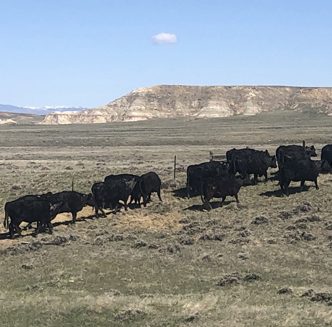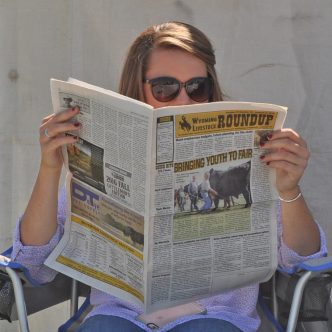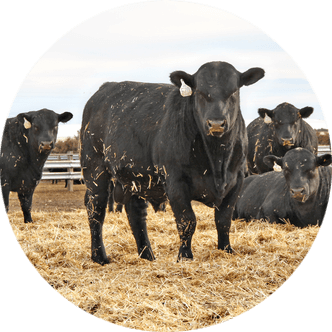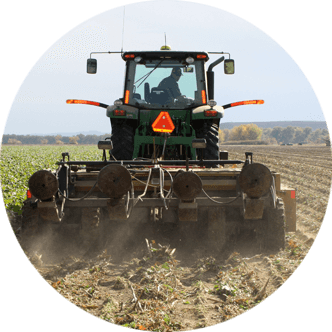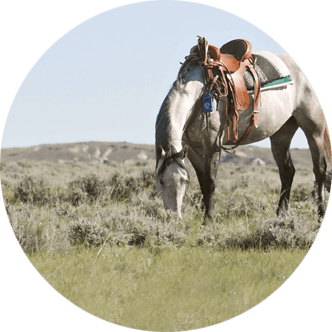Reducing wild horse herds is good for ecosystem health
As the Bureau of Land Management (BLM) has delayed plans to remove wild horses from the checkerboard land ownership area near Rock Springs – where no private landowner has consented to the presence of wild horses on their property and the horse population is estimated at more than 2,700 – a paper recently published in a scientific journal lends support to managing horse herds for ecosystem health through removal of excess animals.
Federal law requires wild horses and burros be maintained at an appropriate management level (AML) to preserve a “thriving natural ecological balance and multiple-use relationship” on western rangelands.
The law mandates wild horse and burro management activities shall be at the minimal feasible level, but when an overpopulation exists, the federal government shall immediately remove excess animals above AML.
Paper highlights
The 26-page perspective published in the peer-reviewed journal Human-Wildlife Interactions sets forth considerations for grazing management for livestock as well as wild horses and burros for resilience of riparian and upland ecosystems.
Sherman Swanson, professor emeritus of rangeland and riparian ecology at the University of Nevada Reno, notes human movement of livestock is used to control the impacts of livestock grazing and meet management goals. These actions can be supplemented with the use of virtual fencing and other stockmanship techniques.
Yet when it comes to wild horse management, options are much more limited, as even harassment of animals is not allowed.
While livestock numbers are controlled by ranchers and through BLM authorizations, the same is not true with wild horse numbers.
Swanson points out authorized and billed animal unit months (AUMs) for livestock on BLM lands in 2016 were 29 percent lower than permitted AUMs and 52 percent lower than those in 1954.
In contrast, since 2018, BLM’s wild horse herd numbers have exceeded 270 percent of their AMLs.
Swanson also notes wild horses differ in behavior from other wild ruminants.
Some species, including Bighorn sheep, pronghorn and mule deer, are displaced by wild horses at watering areas. These other species tend to avoid overgrazing riparian areas, and their population levels are managed through hunting.
Hundreds of other wildlife species are also impacted by wild horse use.
Swanson cited a Nevada study in which wild horse use of priority sage grouse meadows was twice the level of livestock use and 18 times more than all wild ungulates combined.
Similar studies in northern Nevada and Wyoming found preferential selection of riparian areas by horses.
Swanson stated, “If stocking rate is the only consistently available management for horses, it may need to be curtailed substantially to enable riparian plants to thrive, function properly and sustain the rich wildlife and/or aquatic habitats so many could support but do not.”
“Lacking other grazing management options, reliance on stocking rates makes adherence to AML even more important in moderating grazing intensity,” Swanson added.
BLM gathering delays
Delays in gathering excess wild horses and burros allow herds to produce more foals, increasing the costs and risks of irreversible ecological damage, according to Swanson.
Advances in fertility control, when combined with gathering and removing excess wild horses and burros, will assist in achieving and maintaining AML, reducing the number of animals which must be gathered in the future.
Once agencies achieve AML, reduced numbers of excess horses and fertility control could enable adoptions to preclude the need for more off-range holding.
“This is the essence of making the Wild Horse and Burro Program sustainable, integrating gathers and removals with natural mortality, fertility control and adoptions. Getting to AML quickly will mitigate spiraling off-range holding costs,” Swanson wrote.
While some horse advocates propose livestock AUMs be reallocated to wild horses and burros, Swanson notes a predicted outcome would be the loss of ecological resilience and damage to important wildlife habitats through chronic growing season overgrazing in uplands and chronic hot season overgrazing in riparian areas.
Cat Urbigkit is a corresponding writer for the Wyoming Livestock Roundup. Send comments on this article to roundup@wylr.net.

